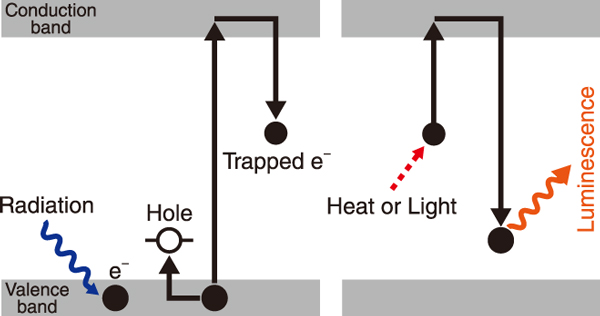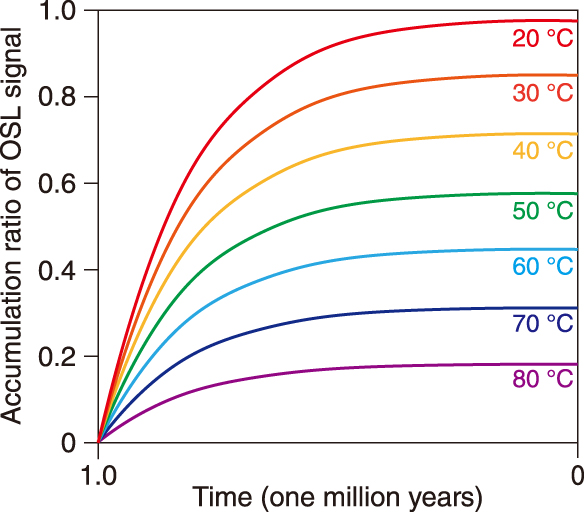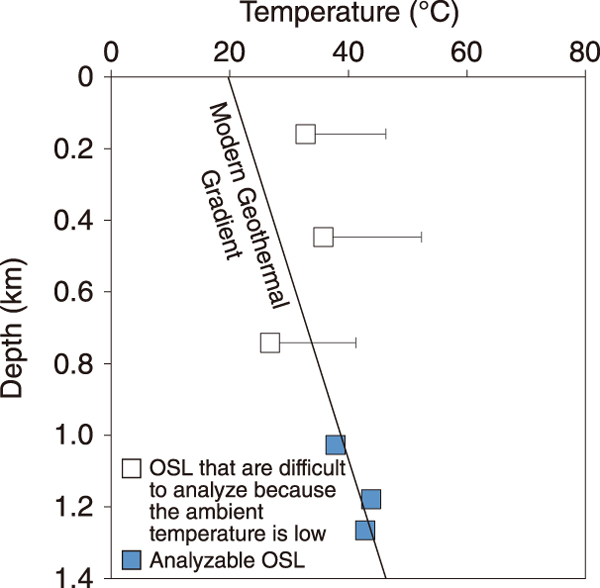
Fig.1 Schematic diagram of the luminescence mechanism

Fig.2 Reconstruction of paleotemperature

Fig.3 Results of inversion of paleotemperatures
Estimating the rate of erosion of land surface is important for geological disposal because this natural phenomenon may change the groundwater flow and the distance between the ground surface and geological disposal site. Toward advancing the technology used for evaluating the erosion rate, the Tono Geoscience Center has been developing optically stimulated luminescence (OSL) thermochronometry. A mineral exhibits OSL when the trapped electrons produced by natural ionizing radiation are released by light stimulation (Fig.1). OSL thermochronometry measures the accumulation rate of OSL signals in a mineral, which is proportional to the accumulation rate of trapped electrons. Because this rate depends on the ambient dose rate and temperature, this method can estimate the transport (thermal) history of the mineral from the deep underground (high temperature) to the surface (low temperature) because of erosion. OSL thermochronometry is sensitive to temperatures of 30 ℃−70 ℃, allowing the reconstruction of thermal histories at crustal depths of <1−2 km. At present, this method can measure among the lowest temperature measurable by thermochronometers; furthermore, it is the only thermochronometric method that is applicable at the depths of geological disposal in Japan (0.3 km or deeper). However, OSL thermochronometry has been used to determine erosion rates only in rapidly denuded regions (more than 2−3 mm/yr) because the accumulation of trapped electrons reach an upper limit (saturation) for several hundred thousand years.
In this study, we applied OSL thermochronometry to study K-feldspar from a deep borehole core drilled in Tono region to extend the applicability of this method to a slowly denuded region. The total length along the borehole is 1,300 m. The saturation values of the OSL signals depend on the ambient temperature. Hence, in this study, paleotemperatures were inverted from saturated OSL signals (Fig.2). The paleothermal structure of the crust can be estimated by applying this method to deep borehole cores. A comparison of the reconstructed paleothermal and present thermal structures allows us to assess the thermal and tectonic stability of the crust, i.e., slowness of erosion, over the past few hundred thousand years. The inverted temperatures were consistent with the in-situ temperatures measured at a depth of ≥1 km (≥40 ℃) (Fig.3). This result agrees with the observations that the Tono region has been tectonically and thermally stable. Thus, we concluded that OSL thermochronometry can be applied to slowly denuded regions by using deep borehole cores. These results suggest that OSL thermochronometry may be applicable regardless of the erosion rate in the target area, and thus, it can contribute to the geological disposal technology.
This study was supported by METI, as part of its R&D supporting program (Grant number JPJ007597), “Establishment of Advanced Technology for Evaluating the Long-term Geosphere Stability on Geological Disposal Project of Radioactive Waste (FY2019-2022).”
(Manabu Ogata)